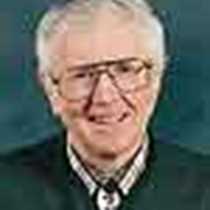Fort Clatsop at Astoria, Oregon
When the Corps of Discovery reached the Pacific and wintered here in 1805, they were surrounded by majestic Sitka spruce up to 200 feet tall and five feet in diameter.
The fastest growing tree in the North Coast rain forest has stiff pointed needles that elicit an “ouch,” “oh” or “yikes” when grasped by newcomers. It is instant identification.
The native people believed the sharp needles provided special powers for protection against evil thought. They used the branches in ceremonies to protect the dancers and to frighten spectators.
The pitch was chewed for pleasure and also to treat burns and boils. It was taken internally for sore throat, toothache, cold and venereal disease. Inner Sitka spruce bark was edible, and when dried with berries were formed into cakes.The twined roots made water-tight hats and baskets.
White settlers soon found that Sitka spruce wood, while light and supple, was the strongest of all the native conifers. It became the wood of choice for strong, light oars, tool handles and musical instruments. Select older spruce is used for sounding boards in the finest concert pianos. At one time the frames for airplanes were of Sitka spruce. In WW I the U.S. Army had a special Spruce Division made up of former loggers. They got the giant spruce out of the woods and to the mills. Harold Hughes built the famed Spruce Goose airplane in WWII.
The forest Lewis and Clark knew at Fort Clatsop was all cleared for crops and dairy pasture until the fort site was gifted to the Oregon Historical Society early in 1900 and later transferred to the National Park Service. The soaring buttressed spruce we see now by the fort started growing in the old pasture 80 to 90 years ago. They are a testimonial to the mild open climate and abundant winter rains. They look like but are not ancient or “old growth forest.”
We also visited Columbia River Maritime Museum and bussed upward to Astor Column atop Coxcomb Hill, an east-west ridge to which this oldest American city on the West Coast clings. There were superb overviews of the Columbia entrance, Pacific Ocean, Youngs Bay, Coast Range and the Lewis and Clark River where our Corps of Discovery found their secure winter quarter.
The climax before returning upriver to Portland, Oregon, our starting point seven days ago, was a run west with Sea Bird, to the notorious Columbia River Bar where incoming Pacific swells pound into Cape Disappointment.
Captain Robert Gray, trading out of Boston for sea otter pelts in 1792, was the first to sail across this broad entrance that thwarted British and Spanish explorers. Gray established that this was the great River of the West, named it for his ship and gave the United States its first tentative claim on this area.
When the Corps of Discovery reached the Pacific and wintered here in 1805, they were surrounded by majestic Sitka spruce up to 200 feet tall and five feet in diameter.
The fastest growing tree in the North Coast rain forest has stiff pointed needles that elicit an “ouch,” “oh” or “yikes” when grasped by newcomers. It is instant identification.
The native people believed the sharp needles provided special powers for protection against evil thought. They used the branches in ceremonies to protect the dancers and to frighten spectators.
The pitch was chewed for pleasure and also to treat burns and boils. It was taken internally for sore throat, toothache, cold and venereal disease. Inner Sitka spruce bark was edible, and when dried with berries were formed into cakes.The twined roots made water-tight hats and baskets.
White settlers soon found that Sitka spruce wood, while light and supple, was the strongest of all the native conifers. It became the wood of choice for strong, light oars, tool handles and musical instruments. Select older spruce is used for sounding boards in the finest concert pianos. At one time the frames for airplanes were of Sitka spruce. In WW I the U.S. Army had a special Spruce Division made up of former loggers. They got the giant spruce out of the woods and to the mills. Harold Hughes built the famed Spruce Goose airplane in WWII.
The forest Lewis and Clark knew at Fort Clatsop was all cleared for crops and dairy pasture until the fort site was gifted to the Oregon Historical Society early in 1900 and later transferred to the National Park Service. The soaring buttressed spruce we see now by the fort started growing in the old pasture 80 to 90 years ago. They are a testimonial to the mild open climate and abundant winter rains. They look like but are not ancient or “old growth forest.”
We also visited Columbia River Maritime Museum and bussed upward to Astor Column atop Coxcomb Hill, an east-west ridge to which this oldest American city on the West Coast clings. There were superb overviews of the Columbia entrance, Pacific Ocean, Youngs Bay, Coast Range and the Lewis and Clark River where our Corps of Discovery found their secure winter quarter.
The climax before returning upriver to Portland, Oregon, our starting point seven days ago, was a run west with Sea Bird, to the notorious Columbia River Bar where incoming Pacific swells pound into Cape Disappointment.
Captain Robert Gray, trading out of Boston for sea otter pelts in 1792, was the first to sail across this broad entrance that thwarted British and Spanish explorers. Gray established that this was the great River of the West, named it for his ship and gave the United States its first tentative claim on this area.




